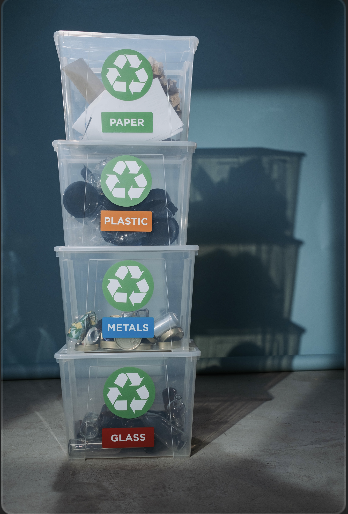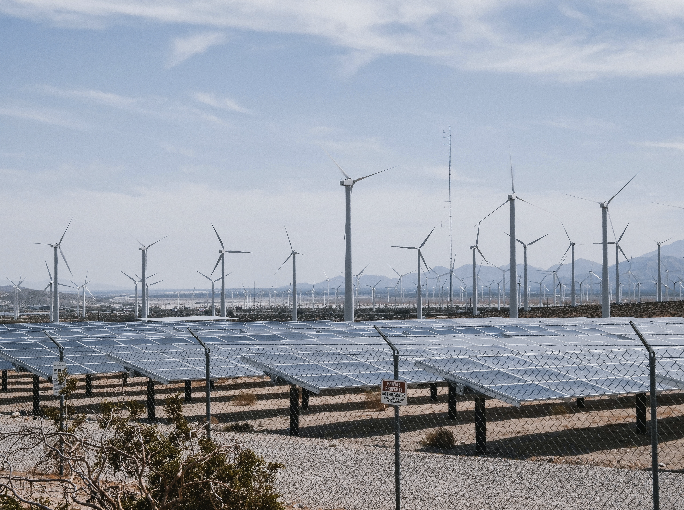
Building a Greener Future: The Heart and Mind of Sustainable Construction Practices
In a world grappling with environmental challenges and a growing sense of urgency to address them, the construction industry is undergoing a profound transformation. Sustainable construction practices are no longer just a buzzword but a moral and environmental imperative. These practices not only offer a way to reduce the environmental impact of construction but also carry an emotional resonance, reminding us of our responsibility to the planet and future generations. Let's explore the emotional and educational aspects of sustainable construction practices, delving deep into why they matter, how they are reshaping the industry, and what individuals and businesses can do to make a positive impact.
The Urgency of Sustainable Construction
In an era marked by environmental challenges and resource depletion, the urgency of sustainable construction practices cannot be overstated. Sustainable construction isn't just a trend; it has emerged as a beacon of hope for a more eco-friendly and responsible future.
One of the most compelling reasons to prioritize sustainability in construction is its direct impact on reducing carbon emissions. Traditional construction methods are responsible for a significant portion of global greenhouse gas emissions, from their construction to operation and eventual demolition. Sustainable construction techniques focus on eco-friendly materials, optimizing energy efficiency, and reducing waste, significantly lowering a project's carbon footprint.
Sustainable construction practices also prioritize water conservation, which is crucial in a world facing increasing water scarcity. From low-flow fixtures to rainwater harvesting systems, sustainable buildings are designed to minimize water wastage, ensuring the responsible use of this precious resource.
Additionally, sustainable construction often leads to healthier indoor environments. Low-VOC (volatile organic compound) paints, better ventilation, and natural lighting contribute to improved air quality, resulting in healthier and more productive occupants.

The need for sustainable construction practices arises from the following key challenges:
1. Resource Depletion: Traditional construction methods consume vast amounts of finite resources, such as timber, steel, and fossil fuels.
2. Waste Generation: Conventional construction generates substantial amounts of waste, much of which ends up in landfills.
3. Energy Consumption: The energy required for construction and the subsequent operation of buildings accounts for a significant portion of global energy consumption.
4. Carbon Emissions: Construction is responsible for a substantial portion of global carbon emissions due to the use of energy-intensive processes and materials.
To address these challenges and mitigate the environmental impact of construction, sustainable practices have gained prominence.
Understanding Sustainable Construction Practices
What Are Sustainable Construction Practices?
Sustainable construction practices, often referred to as green or eco-friendly construction, are approaches to building and development that prioritize environmental responsibility and resource efficiency. These practices aim to minimize the negative impact of construction on the environment while maximizing energy efficiency, safety, and long-term economic viability.
The Importance of Sustainable Construction

Environmental Impact
1. Reduced Carbon Footprint
One of the key reasons sustainable construction practices are gaining prominence is their ability to reduce the carbon footprint of construction projects. By using environmentally friendly materials and energy-efficient building techniques, we can significantly lower greenhouse gas emissions associated with construction.
2. Conservation of Natural Resources
Sustainable construction emphasizes the responsible use of natural resources. This includes reducing water consumption, minimizing waste, and using renewable or recycled building materials. Such practices help conserve resources for future generations.

Economic Perks
3. Long-Term Cost Savings
While adopting sustainable construction practices may require an initial investment, they often result in long-term cost savings. Energy-efficient buildings have lower operational costs, and green construction materials tend to be more durable, reducing maintenance and replacement expenses.
4. Enhanced Property Value
Sustainable buildings are in high demand, and their value tends to increase over time. Additionally, certifications like LEED (Leadership in Energy and Environmental Design) can increase property value and marketability.
Social Responsibility
5. Improved Health and Well-being
Sustainable construction practices prioritize indoor air quality, natural lighting, and optimal thermal comfort. This contributes to healthier and more comfortable living and working environments for occupants.
6. Community Impact
Sustainable construction projects often have a positive impact on the surrounding community. They create jobs, stimulate local economies, and can serve as examples of responsible development.
Next-Gen Green Building Innovations and Tactics
1. Green Building Materials
Green building materials are a fundamental aspect of sustainable construction. These materials are chosen for their minimal environmental impact and energy efficiency. Examples include:
· Recycled Materials: Utilizing materials like recycled steel, glass, and wood reduces the demand for new resources.
· Sustainable wood (FSC-certified): Sourcing wood from certified sustainable forests ensures responsible logging practices.
· Insulating concrete forms (ICFs)
· Low-VOC (volatile organic compounds) paints and finishes: Volatile organic compounds (VOCs) in paints can release harmful chemicals into the air. Low VOC paints are an eco-friendly alternative.
· Energy-Efficient Insulation: Insulation materials that enhance energy efficiency, such as spray foam or cellulose, can reduce heating and cooling energy consumption.
2. Energy-Efficient Design
Energy-efficient design involves optimizing a building's layout, orientation, and insulation to reduce energy consumption. Strategies include:
· Insulation: Proper insulation prevents heat loss in winter and reduces cooling needs in summer.
· Green Roofing: Green roofs covered in vegetation can improve insulation and reduce urban heat island effects.
· Energy-Efficient Windows: Installing windows with low U-values and high Solar Heat Gain Coefficients (SHGC) can optimize energy usage.
· LED Lighting: LED lighting consumes less energy and has a longer lifespan than traditional bulbs.
· Renewable Energy Sources: Integrating solar panels or wind turbines can generate clean energy on-site.
3. Water Efficiency
Water-efficient practices help conserve this precious resource. Sustainable construction includes:
· Low-flow plumbing fixtures
· Rainwater harvesting systems
· Drought-tolerant landscaping
· Greywater recycling

4. Waste Reduction and Recycling
Minimizing construction waste and recycling materials are crucial aspects of sustainable construction. This involves:
· Waste Reduction: Careful planning can reduce waste generation through efficient design and material usage.
· Material Recycling: Reusing and recycling materials like concrete, asphalt, and metal reduces the need for virgin resources.
· Construction Waste Management Plans: Developing and implementing waste management plans to ensure proper disposal and recycling.
5. Sustainable Site Selection
Choosing an appropriate site for construction can significantly impact sustainability. Considerations include:
· Site Assessment: Conducting a thorough assessment of the site to identify ecologically sensitive areas and plan construction accordingly.
· Preserving Natural Features: Minimizing disruption to natural habitats
· Stormwater Management: Implementing permeable pavements and rain gardens to manage stormwater and reduce runoff.
· Access to Public Transportation: Choosing locations with access to public transportation reduces the reliance on private vehicles.
6. Renewable Energy Sources
Incorporating renewable energy sources like solar panels, wind turbines, or geothermal systems can make a building more sustainable by reducing reliance on fossil fuels.

Glitters of Sustainable Construction Practices
1. Environmental Benefits
Sustainable construction practices offer numerous environmental benefits, including:
· Reduced Carbon Footprint: Energy-efficient designs and renewable energy sources lower greenhouse gas emissions.
· Resource Conservation: Using green building materials and recycling reduces resource consumption.
· Biodiversity Preservation: Sustainable site planning helps protect local ecosystems and wildlife.
2. Economic Benefits
While sustainable construction may require an initial investment, it often leads to long-term cost savings and financial advantages, such as:
· Lower Operating Costs: Reduced energy and water consumption result in lower utility bills.
· Higher Property Values: Sustainable buildings often command higher resale or rental values.
· Government Incentives: Some regions offer tax incentives or grants for green construction projects.
3. Health and Well-being
Sustainable construction also benefits occupants by creating healthier indoor environments:
· Improved Air Quality: Low VOC materials and efficient ventilation systems enhance indoor air quality.
· Natural Light: Well-designed spaces with ample natural light contribute to occupant well-being.
· Noise Reduction: Sustainable designs can incorporate noise-reducing features for a quieter living or working environment.
Navigating the Cutting-Edge Hurdles in Sustainable Construction
Although sustainable construction has clear advantages, several challenges and barriers hinder its widespread adoption:
· Higher Initial Costs: Sustainable materials and technologies can be more expensive upfront.
· Lack of Awareness: Many stakeholders are unaware of the benefits and techniques of sustainable construction.
· Regulatory Hurdles: Local building codes and regulations may not always support sustainable practices.
· Resistance to Change: Some professionals in the industry may resist adopting new, unfamiliar methods.
The Future of Sustainable Construction
As the world faces pressing environmental challenges, sustainable construction practices are poised to become the standard rather than the exception. Governments, businesses, and individuals are recognizing the importance of building in a way that conserves resources, reduces emissions, and creates healthier living environments.

Building a Greener Future Together
In conclusion, sustainable construction practices are not merely a passing trend but a vital component for a planet facing environmental challenges. By adopting eco-friendly materials, energy-efficient designs, and responsible building techniques, we can reduce the environmental impact of construction while reaping economic benefits and promoting social responsibility. The journey towards a more sustainable and environmentally responsible future lies at the core of innovative sustainable construction practices.
As we've explored the intricacies of these approaches, it's clear that they are not just about bricks and mortar; they represent a profound shift in our mindset and priorities. By embracing sustainable construction practices, we can build a better world, one eco-friendly structure at a time. It is our responsibility to ensure that the legacy we leave behind is not one of environmental degradation but of stewardship and innovation in the face of global challenges. Together, we can construct a brighter, more sustainable future for generations to come.
👉 Check https://app.bidlight.com and Learn how BidLight can help you accurately estimate your BIM model.